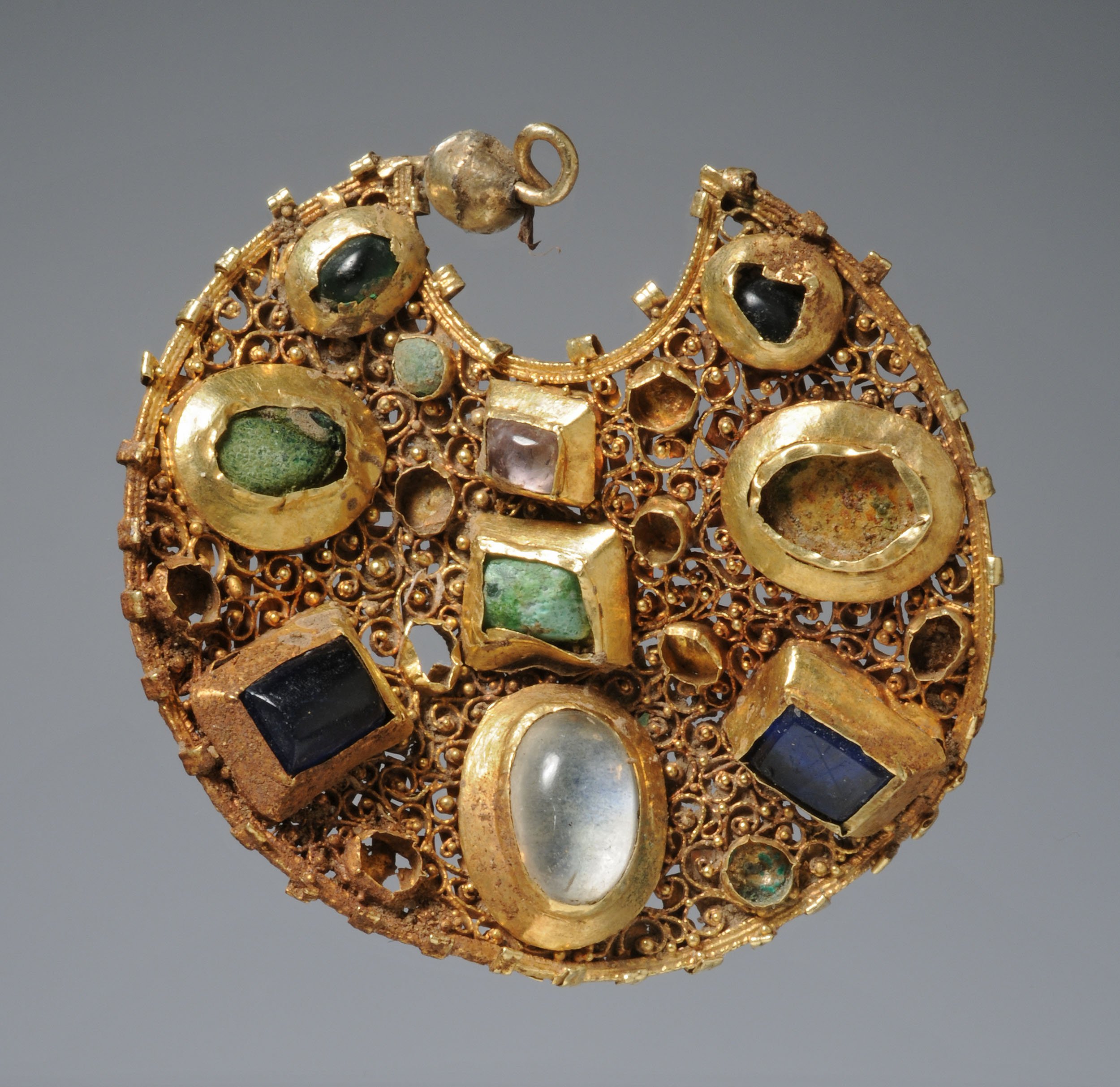
A 800-year-old cache of gold jewelry and silver coins was discovered in northern Germany. And where there’s newly unearthed gold, there’s quite likely an amateur metal detectorist who located it.
Nicki Andreas Steinmann was a trainee learning how to use a metal detector with an instructor when, while walking a tract of land close to Hedeby and Danewerk World Heritage Site in the state of Schleswig-Holstein, the pair stumbled upon gold artifacts and coins. Once unearthed, the hoard, as indicated by the coins found stacked upon one another, looked to have been buried all at once.
Nicki Andreas Steinmann, the trainee metal detectorist, with his discovery. Photo: ALSH.
The detectorists reported their find in late February to the State Archaeological Department of Schleswig-Holstein (ALSH), which conducted the analysis of the artifacts.
“The hoard consisted of two very high quality gold earrings set with semi-precious stones, a gilded pseudo-coin brooch, two gilded stone-studded finger rings, a ring fragment, a small formerly gilded perforated disc, a ring brooch, and about 30 silver coins, some of them heavily fragmented,” Ulf Ickerodt, the director of ALSH, told Live Science.
One of the gold earrings with semi-precious gems in the Byzantine style. Photo: ALSH.
The team has dated the two earrings, surprisingly well-preserved, to around 1100 due to their apparent Byzantine style and craftsmanship. One of the brooches is also an imitation of an Islamic gold dinar, dating it to the Almohad caliphate between the 12th and 13th centuries.
The 30 coins are linked to the reign of Valdemar II, the Danish king who ruled from 1170 to 1241. Fragments of fabric found with the coins suggest that they were once buried in a bag.
The gold brooch designed as an imitation Almohad gold dinar. Photo: ALSH.
That the stash should contain Mediterranean jewelry and Danish currency makes sense for the area of Hedeby, once a Viking Age trading hub.
“An extensive north-south and east-west trade network developed here since the early Middle Ages, in which the Mediterranean region, the North Sea, and the Baltic Sea were integrated,” explained Ickerodt.
Some of the Danish coins, some fragmented. Photo: ALSH.
In fact, the archaeologists speculate that the hoard, whether it contains personal possessions or stolen property, could have been buried hastily when Hebedy was sacked and destroyed in 1066. “Especially in times of crisis, the resulting danger leads to the hiding of possessions,” Ickerodt added. “The hoard was certainly not put down by chance.”
Its resurfacing, though, is another matter.